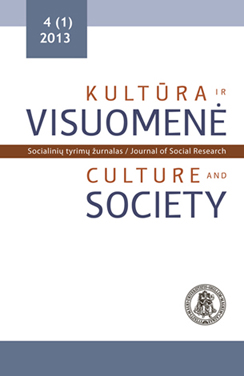Mediciniškai nepaaiškinami negalavimai: šeimos gydytojų patirtys
Treating Medically Unexplained Disorders: Experiences of General Practitioners
Author(s): Gediminas Raila, Ingrida Naujokaitė, Leonas Valius, Vylius Leonavičius, Giedrė BaltrušaitytėSubject(s): Cultural Essay, Political Essay, Societal Essay
Published by: Vytauto Didžiojo Universitetas
Keywords: Primary health care; medically unexplained disorders; family doctors; medical consulting approach
Summary/Abstract: 50% of all primary health care patients present persistent symptoms without clear pathology (Nettleton 2006; Wileman 2002; Asmundson 2001). In medical practice these symptoms are referred to as medically unexplained disorders. Family doctors play most significant role in management of patients with such disorders. However, since there is no clear medical consensus regarding etiology, classification, diagnosis and treatment of medically unexplained disorders, family doctors have to develop their own strategies of examining, consulting and treating their patients. Using data from semi-structured interviews with 17 family doctors working in Kaunas and Kaunas region, this article describes main medical consulting approaches used by family doctors when managing patients with medically unexplained disorders. The findings of the study indicate that family doctors use three different approaches in managing medically unexplained cases: biomedical, psychological and psychosocial. The use of a particular medical consulting aproach depends on a doctor’s perception of the etiology of disorder and patient’s expectations. While family doctors tend to switch between different consulting approaches depending on concrete case and individual patient’s perception of his or her health problem, the biomedical approach seems to be a dominant consulting approach. Some doctors claim that since medically unexplained disorders are of social nature they should be managed by using non-medical approaches and by non-medical specialists.
Journal: Kultūra ir visuomenė: socialinių tyrimų žurnalas
- Issue Year: IV/2013
- Issue No: 1
- Page Range: 81-97
- Page Count: 17
- Language: Lithuanian

